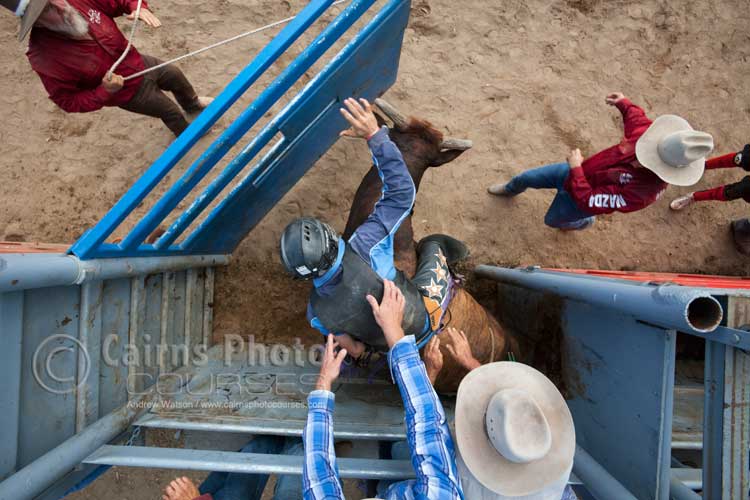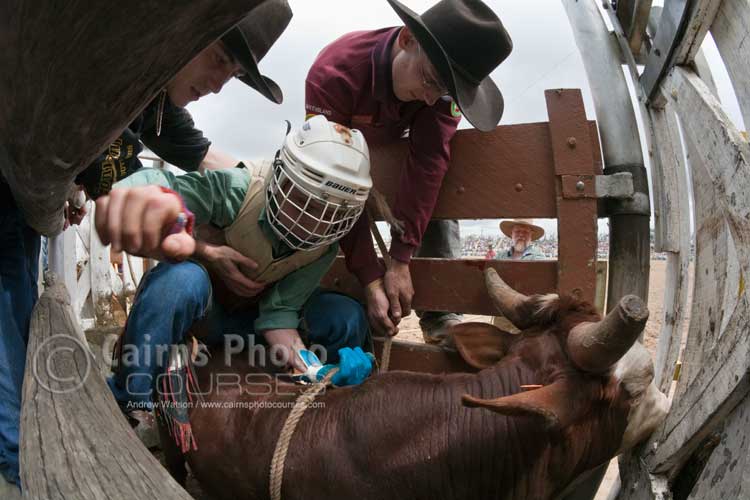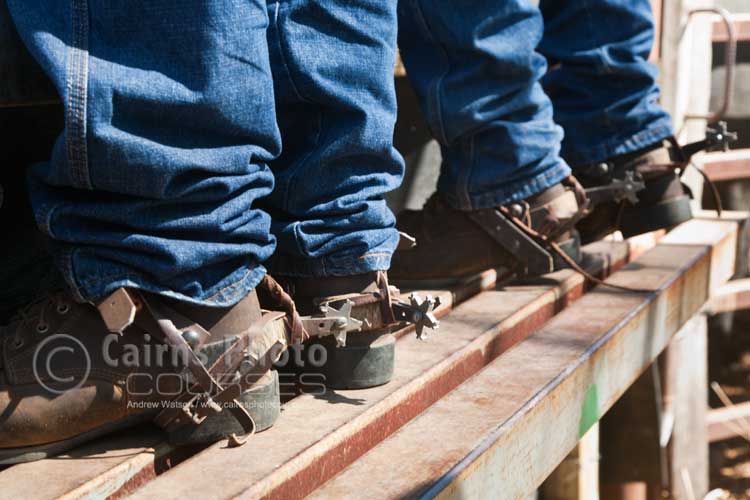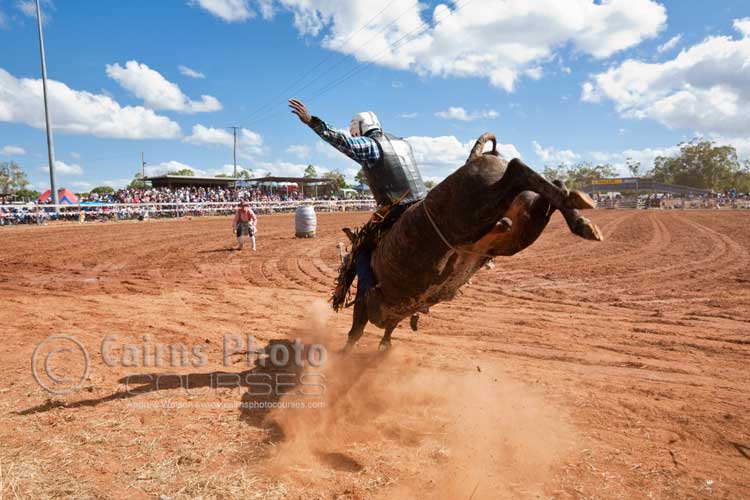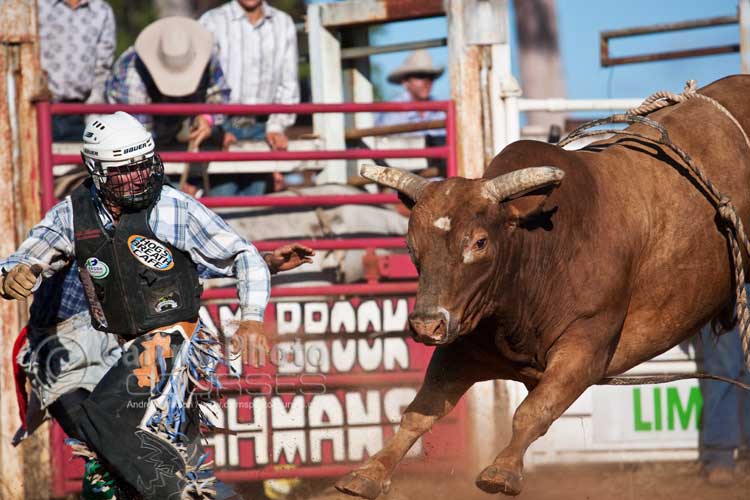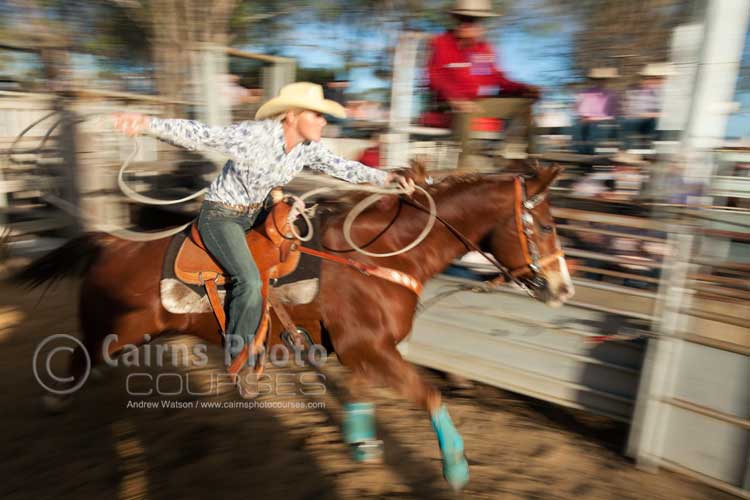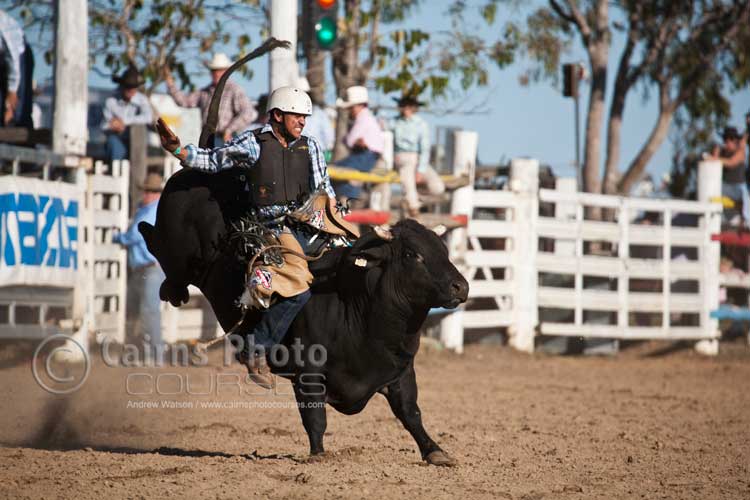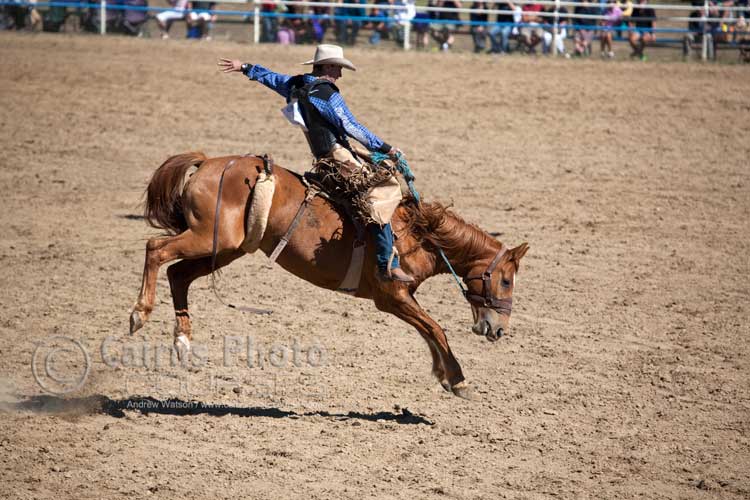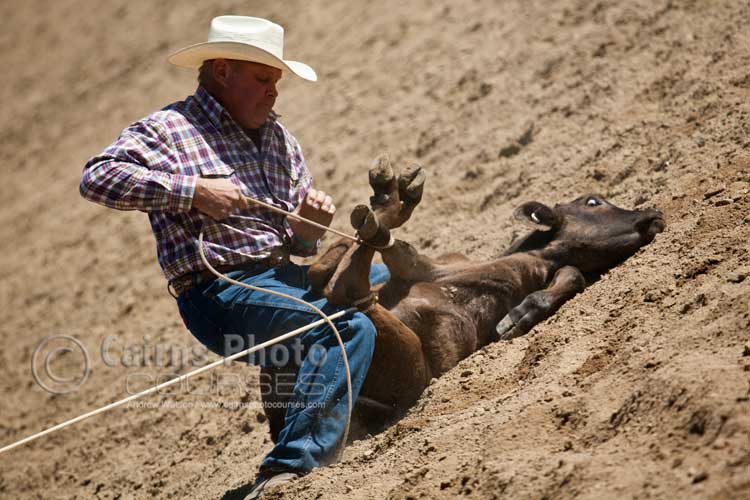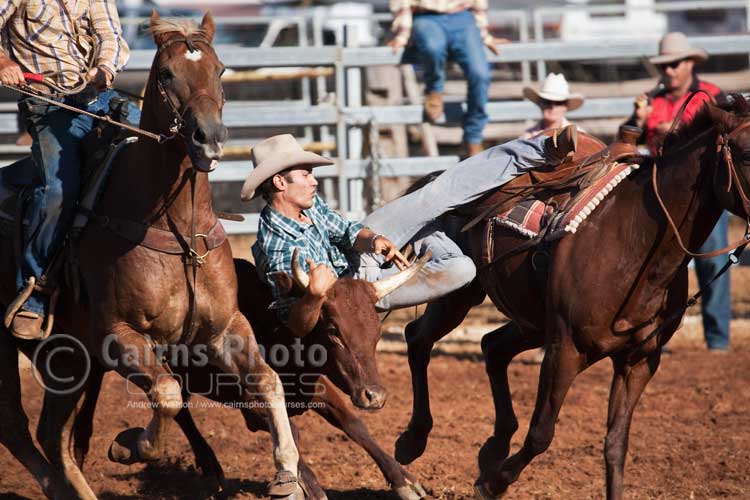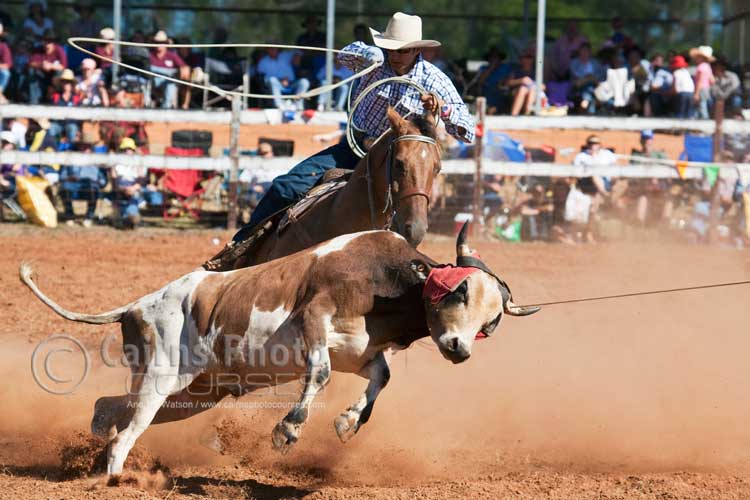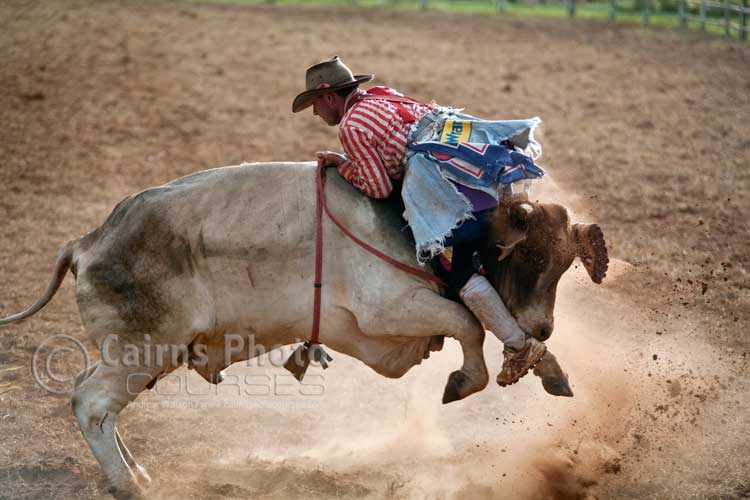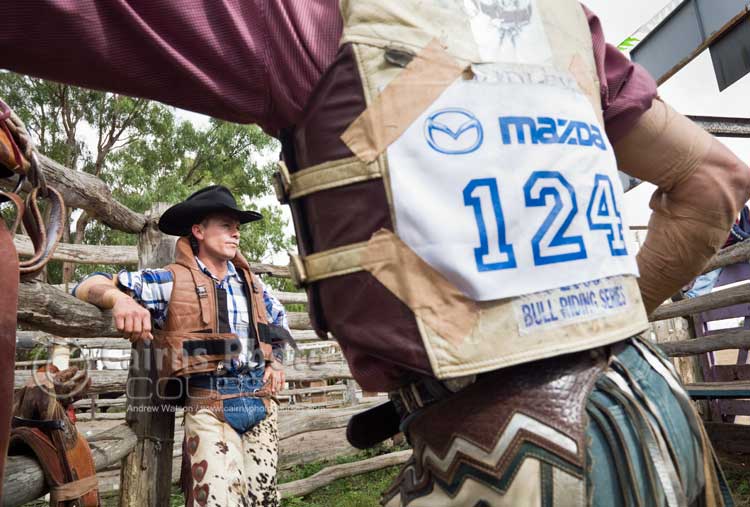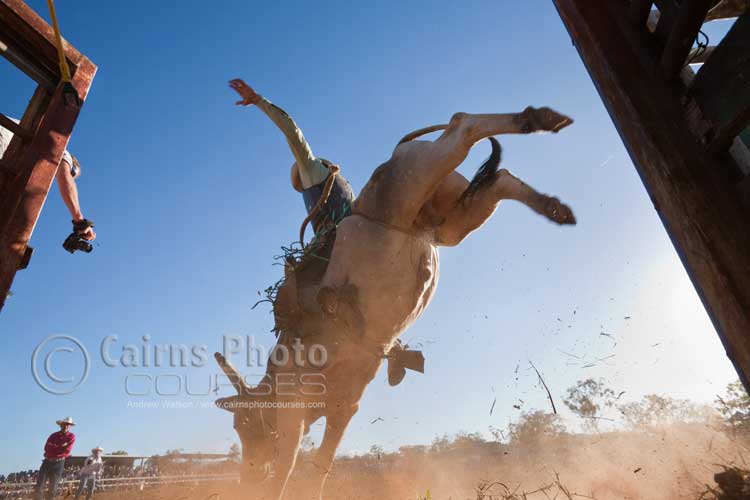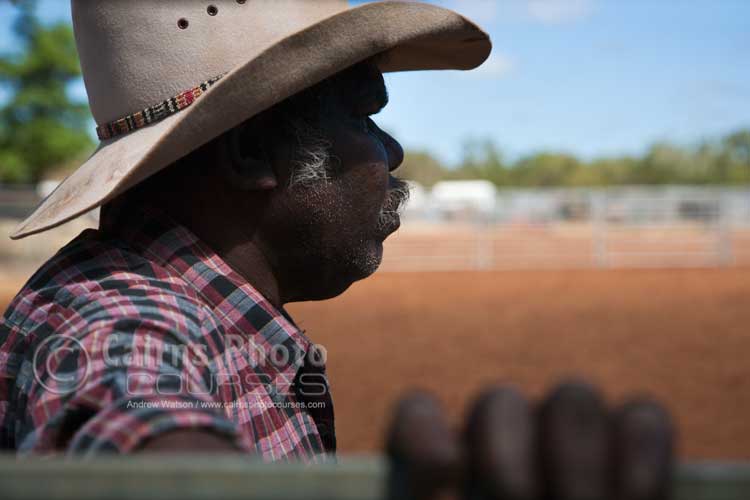Photographing a rodeo
July 11th, 2013
Well it’s that time of year again… a chance to dust off your akubra and don your finest RM Williams (or if you’re a city slicker like myself, anything in your wardrobe a little bit country). The Mareeba Rodeo is just around the corner and for a glimpse of rodeo culture, it’s a great opportunity, just an hour’s drive west of Cairns.
Along with chaps in chaps, holding on for dear life on the backs of bucking broncos and bristling bulls, there’s a load to shoot during any rodeo. Capturing those moments takes some skill, a little bit of knowledge and a whole lot of luck. Anyway, here’s some tips to help you take home some memorable rodeo shots…
The Gear
A DSLR capable of a couple of frames of second will allow you to capture the action, with at least two zoom lenses (say, 24-70mm and 70-200mm lenses). If you’re ringside or perched up in the stands watching on, you’ll probably need a bit more focal length reach… so a 1.4 or 2x extender or a 300-400mm lens will help you get in closer. A wide angle or fish-eye lens will also give some interesting perspectives, if you can get up close to the action.
Unless your shooting at night, you can probably ditch the flash. Just crank up the ISO so that you can use a shutter speed fast enough to freeze the action (at least 1/500 sec). Also if you’re at the bucking chutes, flash can spook the livestock, which can earn you some harsh words from the cowboy fraternity.
Where to Shoot From
Rodeo rings generally have high 8 ft fences and for good reason… they need to be able to keep in bulls that can weigh up to a tonne and are highly unpredictable. Most rings also have an inside channel for livestock to be moved from a staging area to the bucking chutes. Climbing up on any rodeo fence has it’s dangers, but if you keep your wits about you and always keep an eye on what’s going on in the ring, they can be great vantage points. Alternatively, you can try to shoot through the fence railings or get down low and shoot from ground level.
One of my favourite locations to shoot from is from the competitors area and around the bucking chutes. Again this is something you do at your own risk, and really depends on how strict the rodeo organisers are with photographers. If you do get access, be alert, keep out of the way and don’t interfere with the competitors or the livestock handlers.
For something like bull-riding, the closer you can get to the bucking chutes, the better… as the action happens immediately the gate is opened. For other events, like the steer wrestling or calf roping, a ringside position directly opposite the chutes will allow you to get head on shots of the action, though you’ll probably need a long lens.
How to Shoot
For most of the action you’ll want to freeze motion, so high shutter speeds are critical. Use shutter speeds of 1/500 sec or faster. Use high ISO’s if you need to (often I’ll use 400 or 800 in sunny conditions or around 1600 in overcast conditions) and shoot in manual exposure mode if the lighting is consistent. Otherwise use shutter speed priority, to lock down your shutter speed. Use fast lenses (with large maximum apertures, like f2.8) and use large apertures, f2.8 – f5.6 to enable faster shutter speeds and to separate your subjects from the background.
Other times, say for the roping events, you might want to try a bit of panning action, with a slower shutter speed (1/30 to 1/125 sec) to blur the background and give the sense of speed.
When capturing moving action, be sure to switch your camera’s auto-focus mode to servo to track the subject.
What to Shoot
The heart-in-mouth excitement of the bull-riding is undoubtedly the highlight of any rodeo. Capturing the tense moments just before the ride (in the bucking chutes), the rugged and frenetic action of the ride, and the triumphant conclusion or back to earth thud of a bull-riding fail is what’s it’s all about. The jagged unpredictable nature of the ride make it a tough one to follow photographically, but try to shoot tight to get the enthralling expressions of the rider and onlookers.
The Saddle Bronc Riding is a mix of style and control as the rider clings perilously one-handed to the back of a bucking bronco. Bareback Bronc riding is similar, but with the cowboy in for a wilder ride, without the use of a saddle or rein. Horse and rider getting air, spills, tumbles and epic moments happen in the space of a few seconds.
Barrel racing is a fast-paced horesback sprint as riders are timed completing a route around a series of barrels. Use a high shutter speed to freeze motion as they round their marks or a slow shutter to give the feeling of speed, using panning.
The Rope and Tie is a great spectacle of skill and and teamwork between horse and rider, as he first tries to lasso his calf at speed and then dismounts to flank it on it’s back and bind three legs. Get a position opposite the chutes and use a long lens to capture the action.
Steer wrestling is all about timing and co-ordination as the rider pulls alongside his steer, leans over to grab the steer’s horns and then uses his weight and strength to slow it down and lever it onto its side. Again, most of the action tends to happen in the middle of the ring, so you’ll need to be shooting from as close as possible ringside.
Team roping involves two riders as they combine to try to catch and then control a steer… one attempts to lasso it’s back legs while the other lassos its head, stopping it’s motion and then binding its back legs.
Don’t just restrict yourself to photographing the action inside the ring, look for candid shots of both the competitors and spectators. If you’re like me, rodeo culture can seem as foreign as any overseas country, which can be a great thing. Try to tell the story of the day, with images that reflect both the events and the culture and fashions of the people in attendance. Have fun and hold on tight…

